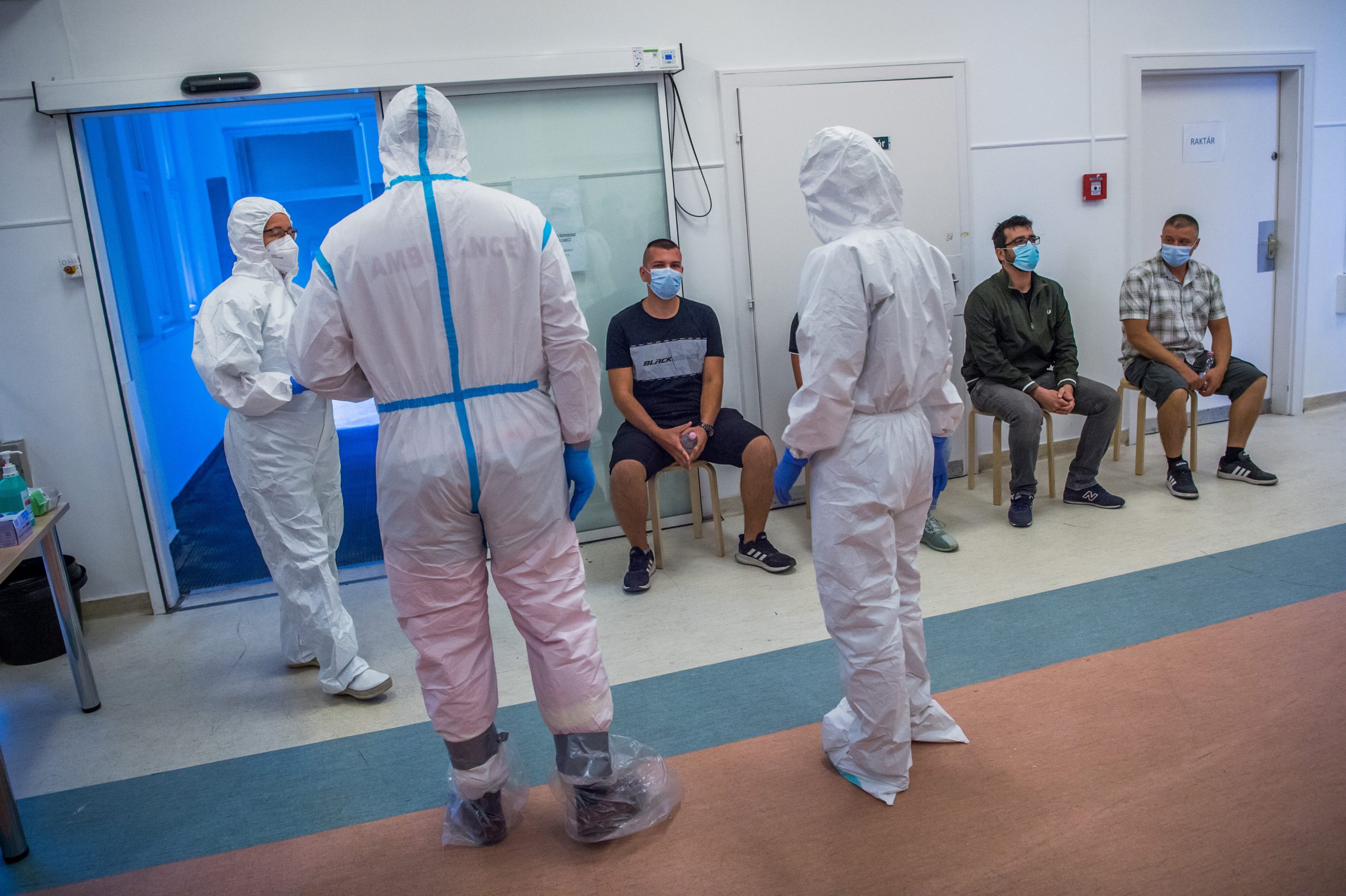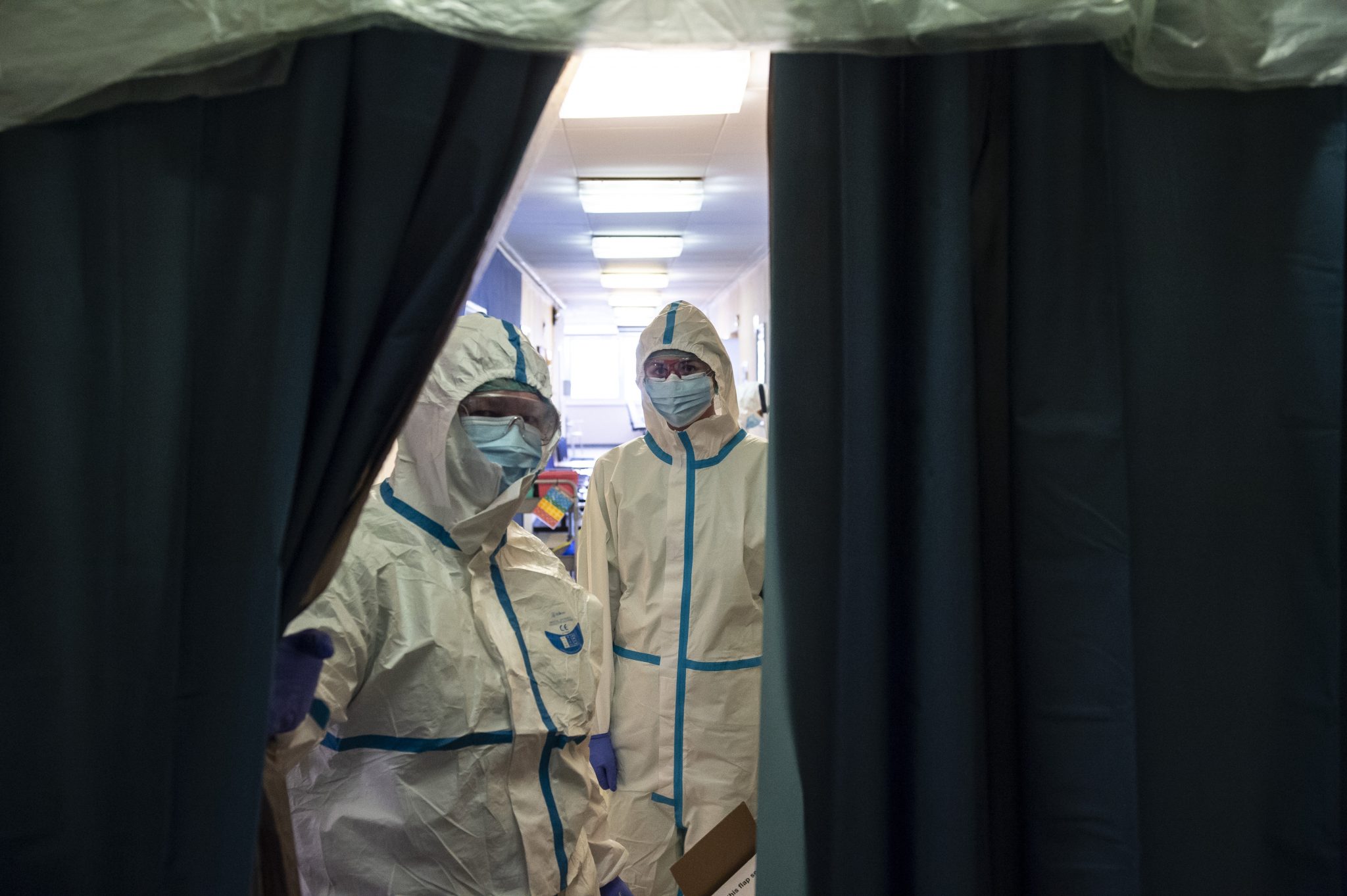
Gergely Röst, professor at the University of Sciences Szeged and Director of the Pandemic Mathematical group, which gives experts’ reports to the executive, is warning us about the dangerous rate of COVID-19 infections.
According to him, the virus’s reproductive value is over 1 and has skyrocketed in the past days, to around 2-2.5, which is extremely alarming. The reproductive number is a way to measure the transmission of the virus, it gives an account of how many people the virus reaches from one infected person. Thus, if the number is 2.5, it means that one infected individual spreads the virus to 2-3 people, on average.
Röst encourages a change in strategy – “In the first wave, limiting and decreasing contacts was key.” Based on the data from that period, the number of in-person contacts was reduced by over 60% nationally, which is how the virus was brought under control.
Related article
Highest Ever Number of New Infections Registered in Hungary
The number of registered coronavirus infections in Hungary has risen by 292 to 5,961 over the past 24 hours, koronavirus.gov.hu said on Sunday morning. Until now, the highest number of new infections in 24 hours was 210, registered on April 10th. The number of fatalities remained unchanged at 614, and 3,759 people have made a […]Continue reading
“We already stressed in April, and it didn’t change ever since, that we need a combination of strategies” – said the mathematician. Social distancing is part of it, but apart from that, “there must be a hygienic use of masks in certain places, testing, and improving the efficiency of social distancing quickly.”
Röst believes that it’s problematic that we do not test enough, most tests are clinical, they are not for monitoring the virus. Thus, there is no real mapping of the infected, it’s impossible to isolate them or to make a concrete decision for interrupting the line of infection.
“As we started to go on vacations, contacts between people came back” – the mathematician said about summer’s infection numbers. He believes that bringing in the virus from vacations abroad played a much smaller role in increasing numbers.
“The rate of infection brought in from abroad was significant at the beginning of July, ever since then, the rate has decreased substantially, moreover, our own number of cases has grown. Today, infected from abroad do not even make up 10% of the total registered cases. The median age of the infected people, from April’s 69 moved to 31 at the end of the summer, meaning that more than the half of the people involved are younger than 31” said Röst. Thus, that is the reason that case numbers are growing, but not the death rate, which effectively stagnates.
Related article
What's the Reason Behind the Sudden Increase in Coronavirus Cases?
Hungary’s numbers for confirmed COVID-19 cases have skyrocketed in the past week or so. Experts believe that vacationing abroad combined with younger generations not paying attention to the threat the virus poses are the primary causes for these numbers. The low death rate, despite an increase in the number of novel coronavirus infections over the […]Continue reading
Gergely Röst believes that the reproductive number is dangerously high, and that this statistic is just as important as measuring daily cases. It’s also important to know if there are any focal points of the virus or if it is just spreading nationwide.
“Opening up the schools will surely increase reproductive numbers,” says Röst. “However, if we are starting schools with growing numbers, there is a great possibility of increasing the number, we are risking potentially causing a great pandemic.” As bringing in the virus from abroad is not the main cause now, he believes that travel restrictions are not the most effective solution and “it’s time to focus on domestic spreading.”
Featured photo illustration by Zoltán Balogh/MTI


